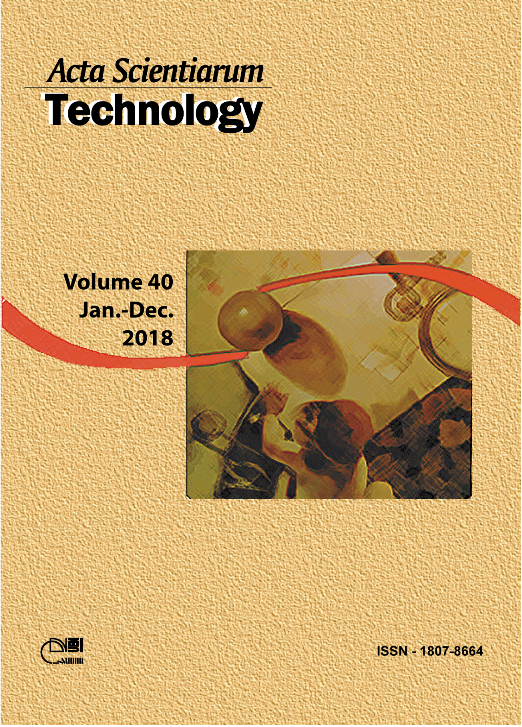<b>Removal of carbamates in drinking water by nanofiltration in tangential flow
DOI:
https://doi.org/10.4025/actascitechnol.v40i1.30756Keywords:
Nanofiltration, drinking water, pesticides, carbamates.Abstract
Membranes processes, in particular, nanofiltration and reverse osmosis, represent an important alternative for treatment of contaminated waters. In this context, the present study aims to evaluate the efficiency of the removal of the carbamates: carbaryl, carbofuran and methomyl at different concentrations from water fortified with these compounds. A pilot nanofiltration unit, operating in the tangential flow, provided with a membrane in the spiral configuration, Model NF90-4040 (Dow Filmtec Membranes) was used. Two types of fortified water with carbamates were performed: distilled water and pond water. Nanofiltration tests with distilled water were performed in a closed system, in order to maintain a constant concentration of carbamates in the feed water. In this case, the efficiency of carbamates removal was greater or equal than 89, 100 and 74% for carbaryl, carbofuran, and methomyl, respectively. When using pond water, the removal of carbamates was higher or equal: 98, 100 and 90% for carbaryl, carbofuran, and methomyl, respectively. The results indicate that by nanofiltration, it is possible to obtain drinking water from the contaminated water with carbamates, according to international guidelines.
Â
Downloads
Downloads
Additional Files
Published
How to Cite
Issue
Section
License
DECLARATION OF ORIGINALITY AND COPYRIGHTS
I Declare that current article is original and has not been submitted for publication, in part or in whole, to any other national or international journal.
The copyrights belong exclusively to the authors. Published content is licensed under Creative Commons Attribution 4.0 (CC BY 4.0) guidelines, which allows sharing (copy and distribution of the material in any medium or format) and adaptation (remix, transform, and build upon the material) for any purpose, even commercially, under the terms of attribution.
Read this link for further information on how to use CC BY 4.0 properly.











8.png)




